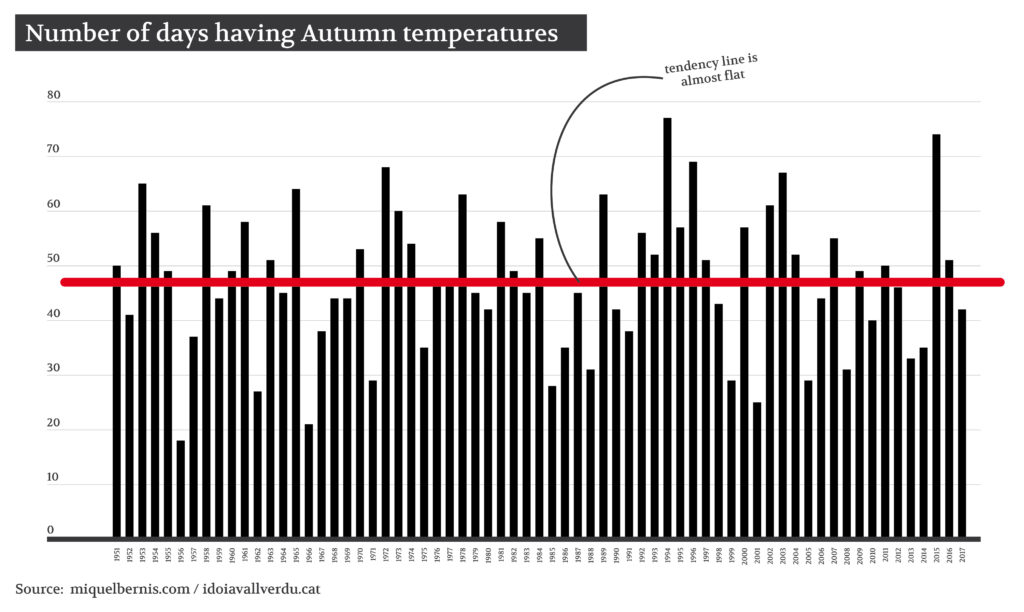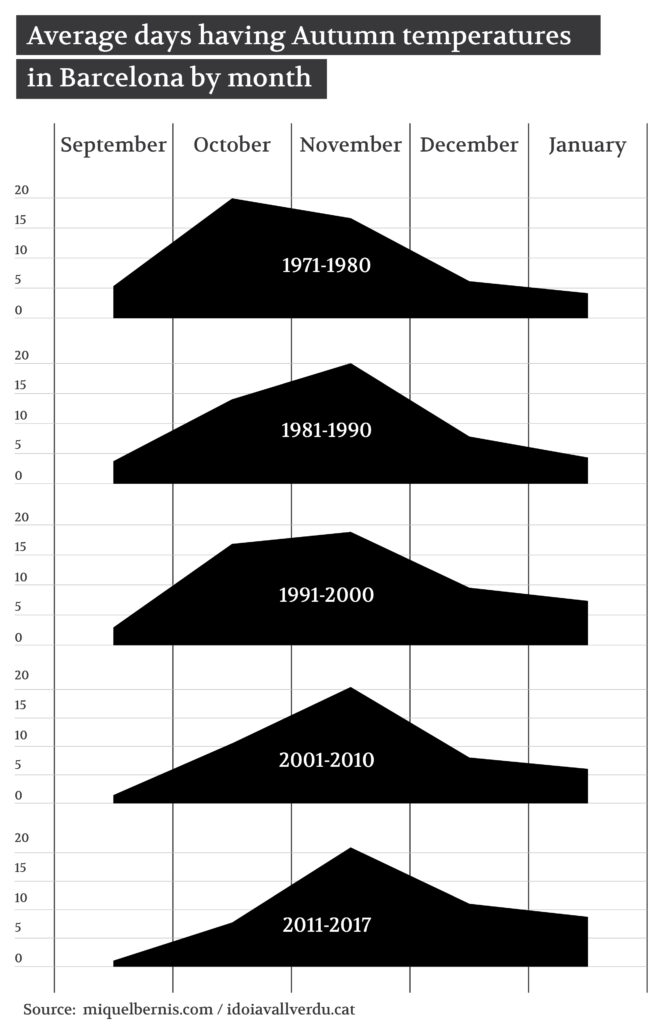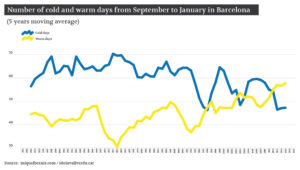You’ve probably heard or chatted recently about the topic “the Autumn is disappearing”. People talk about that here in Barcelona. After a mild October, suddenly a cold snap brought the winter for the first time. The feeling is that this is more and more common as years go by, but, is really the Fall threatened with extinction? Data rather suggest that it’s been pushed and it’s leaving the October.
I’ve done a brief study with the daily temperature data series from Barcelona Airport, aiming to figure out if there is any clear trend about the number of Autumn days decreasing. The exercise is easy to understand: I’ve gotten an average temperature of October and November, taking the period 1971-2000 as a reference, and after that created an interval of what I decide is an Autumn day. To do so, I widened three degrees Celsius above and below the October/November average temperature. What we get is that every day with an average temperature roughly between 12 and 18 degrees Celsius is what we are gonna say from now on this article that is an Autumn day.
Then, using some SQL queries I’ve counted how many September, October, November, December and January days fitted into this criteria from 1951 to nowadays. The result is that if we sum how many days had these mild temperatures from September to January year by year, there is no clear trend. They haven’t increased or decreased. By average 47 days fitted into this criteria, some years had much more, some years much less, but there’s no significant trend.
So where this perception comes from? There are no clear changes among years, but there are changes in how these Autumn days get distributed among months. The main change is that October has been stormed by the summer. During the second half of the XX century, often about 15 to 20 days of October fitted into our Autumn criteria, but a downward trend from 2000 is crystal clear. During the first decade of the XXI century were already 10 days a year, and from 2011 the average lowered even below 8. 2018 is a clear example of that, just two days of October could be considered Autumn days using our criteria, 26 were warmer, and the other 3 colder.
It’s also less common that the Autumn feeling arrives early during September. On the other hand, November, December and especially January have more Autumn days than before. More than disappearing, the fall has been pushed, at least in Barcelona. -November, December, and January make up for the lack of Autumn days in October.
The cold is vanishing
Probably the lack of Autumn feeling comes from the fact that the summer lasts such a long time that often gets followed by the first cold days, as happened this year, but this doesn’t mean cold settles.
In fact, if something is disappearing from Autumn it’s the cold. I’ve also counted what happens with the days that doesn’t fit on our Autumn category during that five months, so to know which were colder o warmer than this. During many decades on this period, the cold days has been more than the warm days, but the tendency fairly flipped during the last 20 years. Now it’s normal to have more warm than cold days among September 1st and January 31st. Summer it’s getting longer and Autumn it’s moving to winter.
>>>
The article was published in the newspaper ARA on November 3, 2018.




